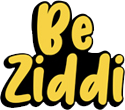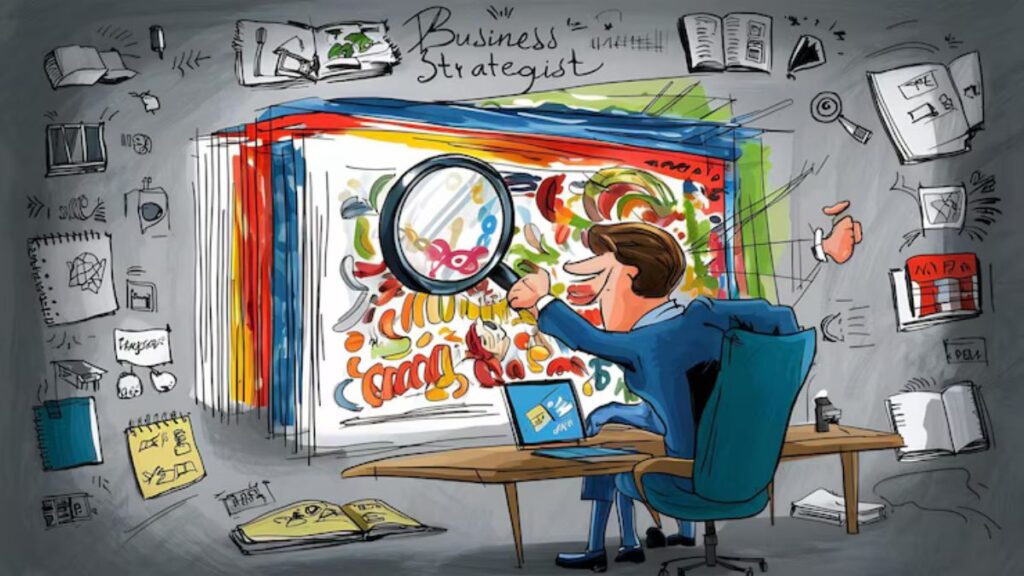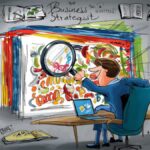Art has always been a strong form of expression, but by 2025, it will also be a route to virality, internet influence, and even monetisation. What began as sloppy sketches in the margins of a notebook—doodles that were too easy to share—can today launch a global trend with the appropriate strategy and a dash of digital refinement.
In today’s hyper-visual culture, platforms such as Instagram, TikTok, YouTube Shorts, and Pinterest provide limitless chances for artists to express their ideas. But, with millions of creators vying for attention, how can you make your art stand out and go viral?
The answer rests in comprehending the transition from traditional techniques to digital-first art, as well as making effective use of AI-powered tools, storytelling, and strategic sharing.
Evolution of Art in the Digital World
It is no longer necessary to visit a gallery to view an artist’s work. In 2025, digital platforms will be the new art galleries, with attention as the currency and engagement determining success.
This move has broadened access to art. A doodle sketched on a smartphone or scanned from a notebook can now reach millions within hours. With the development of digital transformation, even amateur hobbyists can achieve viral fame—if they know how to play the game.
Whether you’re a digital illustrator, sketchbook devotee, or mixed media artist, taking advantage of today’s and tomorrow’s tools is the first step towards going viral.
1. Begin with Story-driven Art
Art that goes viral is more than just visually appealing; it also tells a story. Every popular post, video, or photograph has a story behind it. People are connected by their emotions, processes, and purposes.
How to Do It:
- Share the “before and after” of your piece, showcasing the transformation from rough doodle to polished artwork.
- Use captions to share your inspiration or backstory.
- Create a series in which your audience may follow a character, a theme, or a creative experiment over time.
The more your audience connects with your creativity, the more likely they are to remark, share, and spread it to others.
2. Digitise Your Doodles: The Power of AI Art Generator
In 2025, digitising your analogue art will no longer be confined to scanning or hand redrawing. Artists are now adopting intelligent tools, such as the AI art generator, to convert sketches into high-resolution, stylised masterpieces in seconds.
Why it matters:
- Add colour, shading, and thematic filters to your current doodles.
- It allows non-professional artists to create finished pieces without the need for advanced tools or experience.
- It’s a simple approach to experiment with different styles and discover what works best for your target audience.
Using an AI art generator does not replace your originality; rather, it expands your perspective and creative possibilities. This phase is frequently the bridge between a simple doodle and a post-worthy digital asset that grabs attention.
3. Convert Static Art into Motion Content
People scroll quickly. And, in 2025, static posts, while still relevant, will not always halt the thumb. Motion is magnetic. Here’s where short-form videos come in.
Turning your artwork into micro-videos increases the likelihood of it attracting attention, reaching the algorithm, and being shared. Movement, whether in the form of a time-lapse or an animated loop of your artwork, keeps people interested for longer.
- Create a 30-second video of your drawing process
- Animate portions of your artwork with easy transitions or motion effects.
- Add music, sound effects, or voiceovers to enhance the viewing experience.
4. Use an AI Video Maker App for Seamless Storytelling
Previously, creating motion material required hours of editing and technical skills. Not anymore. Thanks to the emergence of intelligent video technologies, artists may now utilise an AI video maker app to turn their drawings into scroll-stopping Reels, Shorts, or TikToks with little effort.
This tool helps:
- To create a video story using sketches or images.
- You can add dynamic text, transitions, and music without the requirement for a professional editor.
- These tools accelerate your process, allowing you to focus on producing rather than revising.
In the viral world of 2025, video-first art is the new resume. Using an ai movie maker software gives you a creative advantage and a faster approach to bring your ideas to fruition.
5. Optimise Your Content for the Platforms That Matter
Each platform has its own format, audience behaviour, and algorithmic guidelines. If you want to go viral, you need to tailor your art material to each channel.
Quick tips by platform:
- Instagram Reels: Use modern music, simple images, and text overlays. Hashtags are still helpful!
- TikTok: Be raw, authentic, and humorous. Use popular forms and engage in duets/stitches.
- Pinterest: Pin your final piece and provide a blog/tutorial link to add value.
- YouTube Shorts: Display process footage or art hacks in under 60 seconds.
- Pro Tip: Upload your content in vertical format (9:16) to maximise reach across all short-form video platforms.
6. Create an Engaged Community, not just an Audience
Going viral may appear to be the goal, but creating a loyal group is what leads to long-term influence. When your followers become fans, they do more than simply “like” your posts; they advocate your work.
- Respond to comments and direct messages to help create your tribe.
- Enquire what your audience wants to see next.
- Provide behind-the-scenes access or live sessions in which people may see you produce.
The more invested your audience is, the more likely they are to help spread the word about your creativity.
7. Monetise the Momentum
When your material starts to get traction, convert that visibility into an opportunity. In 2025, designers will have various alternatives for monetising their art:
- Print-on-demand stores sell posters, stickers, and merchandise.
- NFTs and digital downloads.
- Commissioned work based on your viral content.
- Brand collaborations with art supply or creative brands.
- Going viral is amazing, but how about turning your work into a business? That’s the real victory.
Final Thoughts
Virality does not belong to perfectionists; it belongs to those who are courageous, outspoken, and dare to be unusual.
From your notebook sketches to your digital masterpieces, everything you produce has the potential to connect with someone out there. And in this day and age of AI, algorithms, and continuous scrolling, your drawing may be the next thing to explode.
So go ahead—draw without fear, share without shame, and use the clever tools at your disposal.






